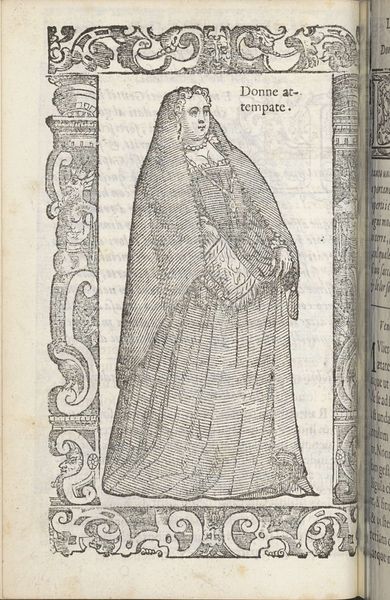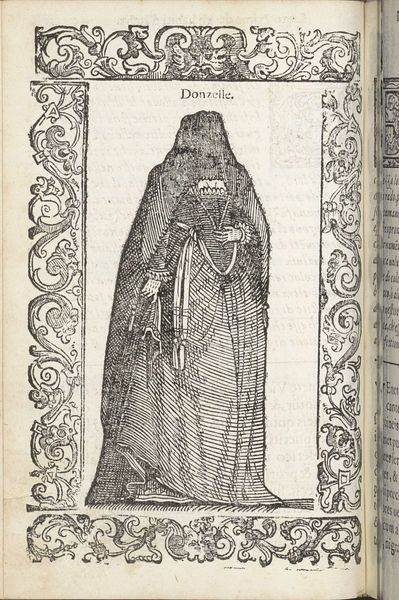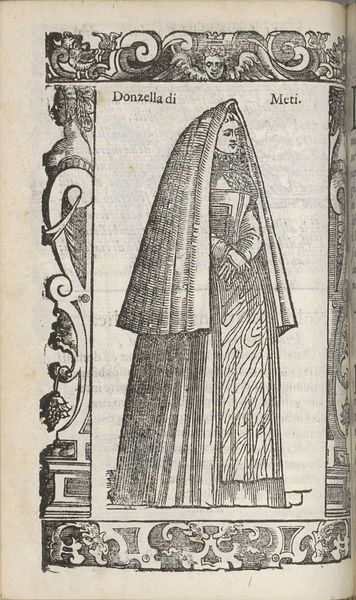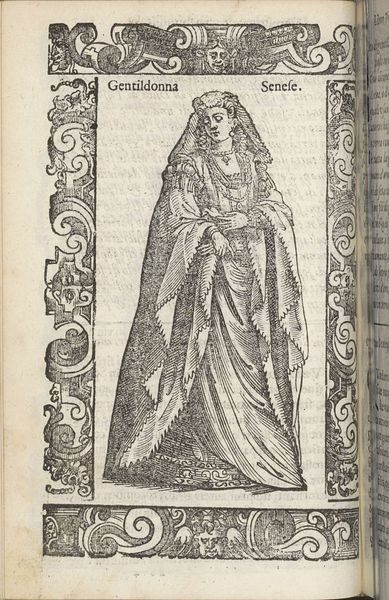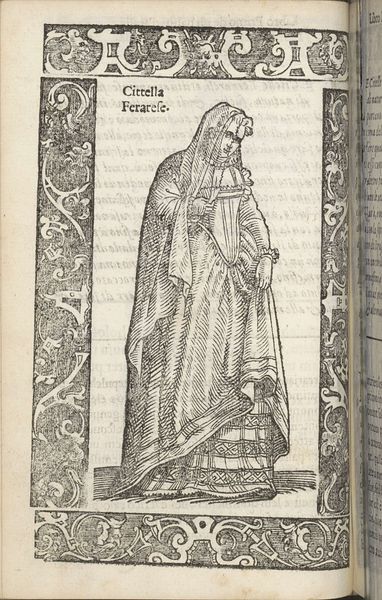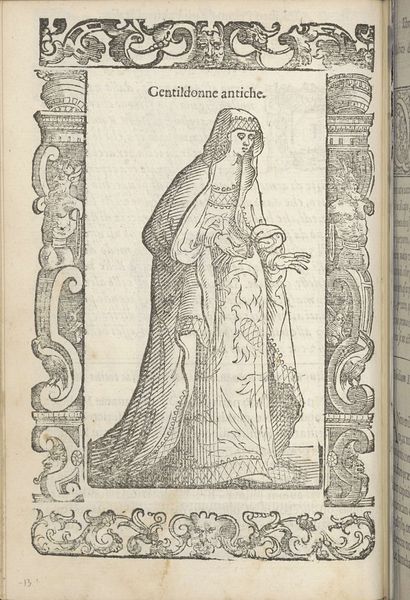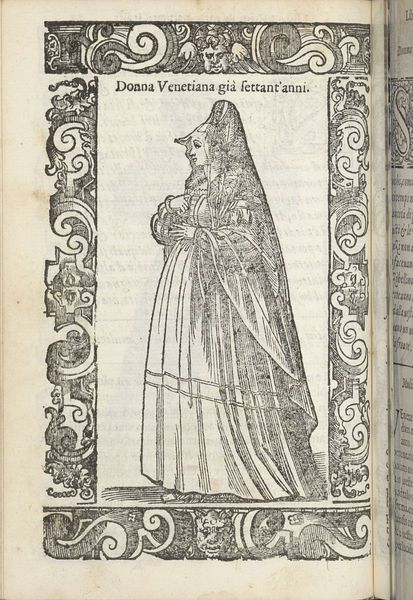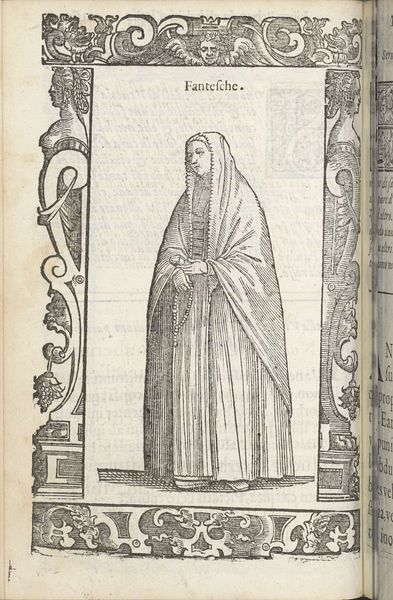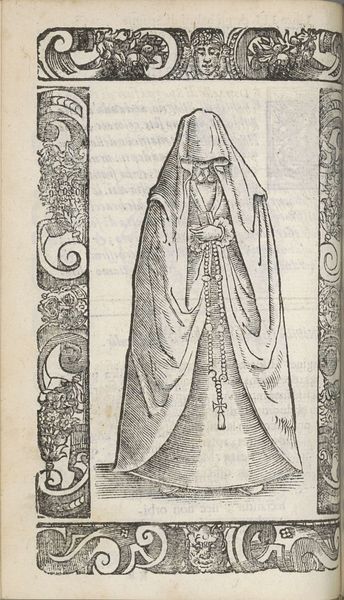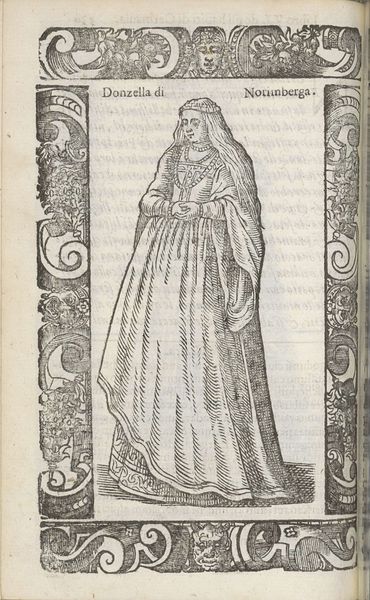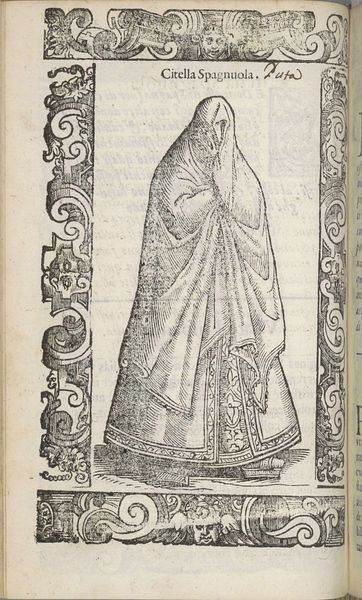
print, engraving
#
portrait
#
aged paper
#
medieval
# print
#
pen sketch
#
old engraving style
#
sketch book
#
hand drawn type
#
personal sketchbook
#
pen-ink sketch
#
pen work
#
sketchbook drawing
#
sketchbook art
#
engraving
Dimensions: height 167 mm, width 125 mm
Copyright: Rijks Museum: Open Domain
Editor: This print, "Donna di Francfort" by Christoph Krieger, dated 1598, gives me a distinct impression of formality and perhaps even restraint. What symbols and cultural memories do you see embodied in this work? Curator: Immediately, the attire speaks volumes. The somber cloak and head covering would signify a specific social standing, perhaps widowhood, piety, or affiliation with a religious order. Consider the visual weight of the clothing, almost swallowing the figure. How does this impact your perception of the subject? Editor: It definitely adds to the feeling of gravity and concealment, as if her identity is deliberately obscured. Is there anything specific about the style that reveals its period? Curator: Absolutely. The decorative border, with its mix of human and animal forms entwined with foliage, pulls from a deep well of visual motifs reaching back to classical antiquity and illuminated manuscripts. Notice how the artist meticulously renders texture – from the delicate lines suggesting fabric to the bold patterns within the frame. These details create a dialogue between the sacred and the secular. Does the 'Donna' herself embody this duality, do you think? Editor: That’s a fascinating point. The frame almost seems to confine her, emphasizing the societal expectations placed on women of that era. I hadn't considered the contrast before, but now I see how the artwork uses symbols to speak to both individual identity and collective memory. Curator: Indeed. The act of framing itself is significant – it's about containment, definition, and also elevation. Think of the symbolic weight these images carry over time. "Donna di Francfort" offers a glimpse into the cultural landscape and perhaps, the inner world of its subject, rendered visible through the language of symbols.
Comments
No comments
Be the first to comment and join the conversation on the ultimate creative platform.
